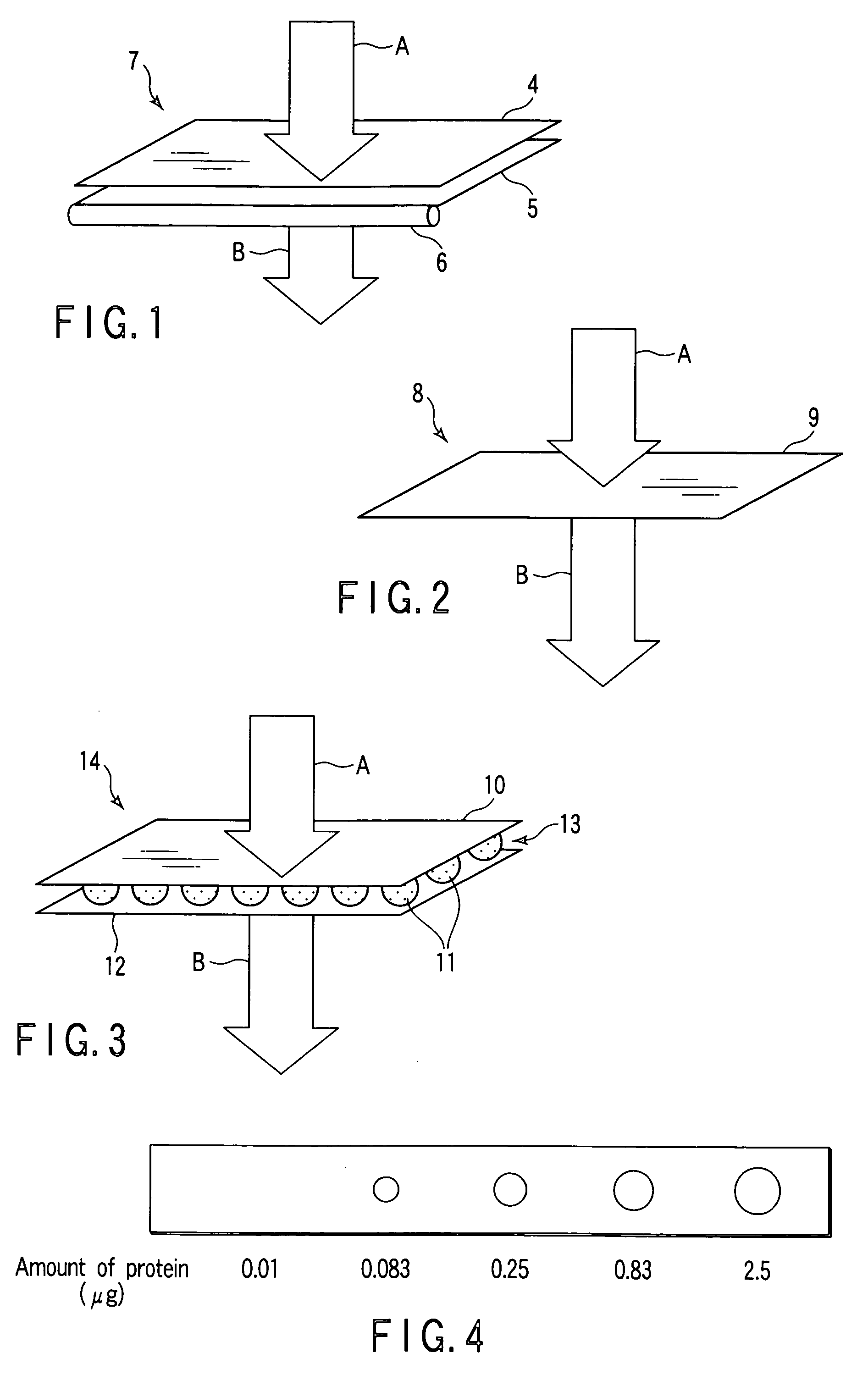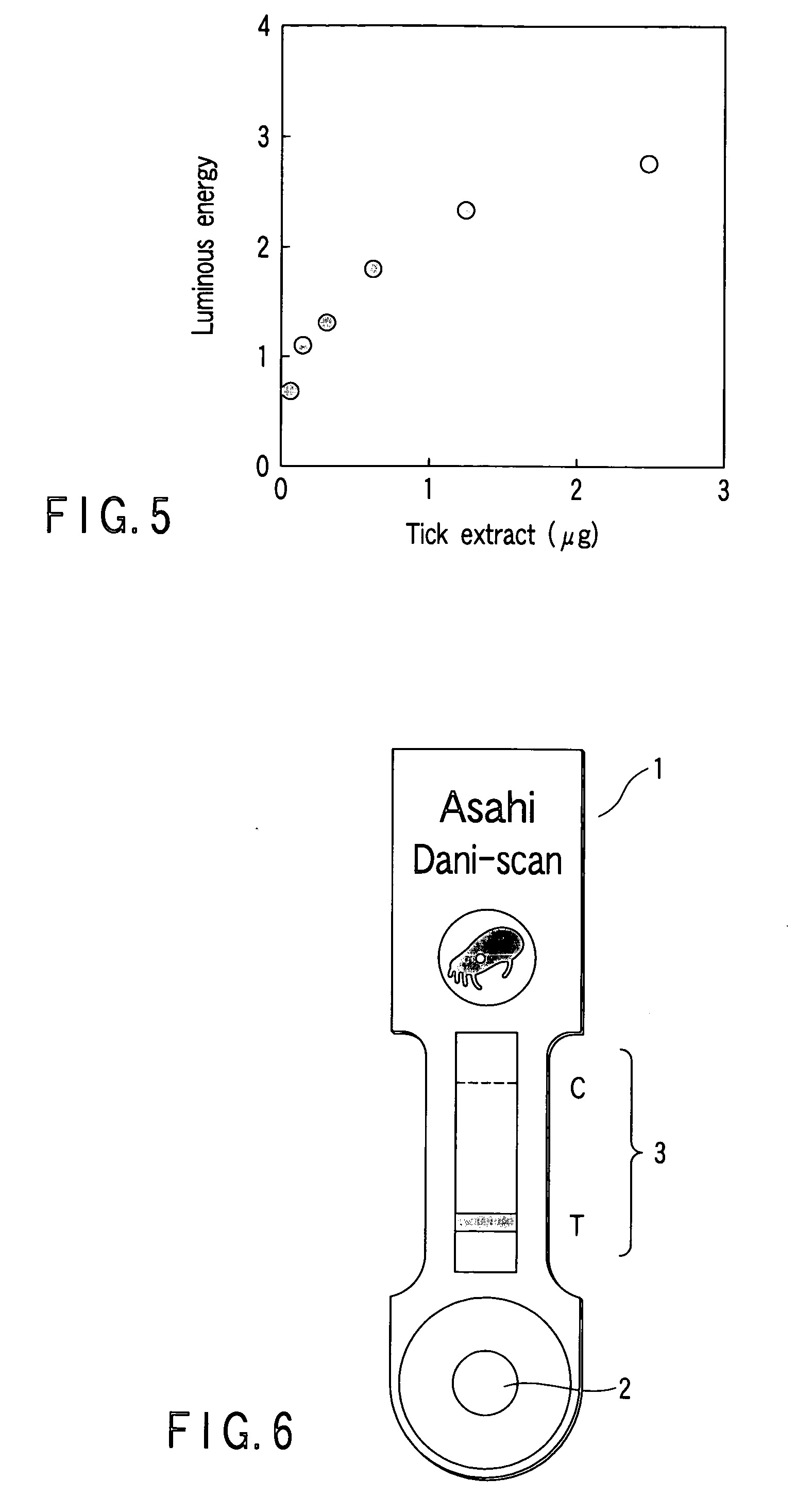Allergen inactivating method, allergen inactivating filter, air treating apparatus, virus inactivating agent, virus inactivating method, virus inactivating filter, air conditoning unit and air conditioner
a virus and filter technology, applied in the field of allergen inactivation, can solve the problems of reducing the level of allergens, reducing the efficiency of allergen detection, etc., and achieves the effects of high heat resistance, easy integration, and excellent practical application
- Summary
- Abstract
- Description
- Claims
- Application Information
AI Technical Summary
Benefits of technology
Problems solved by technology
Method used
Image
Examples
examples 1 to 12
Examples of the invention will be described in detail with reference to the drawings. The elements having the same functions are given the same reference numerals in the drawings to be described below, and repetition of descriptions are omitted.
The allergen detection method, materials and allergen will be described at first.
Method and Material
(1) Detection of Allergen
It is desirable to employ a detection system similar to human and animals' own allergic reactions for detecting the allergen, if any. Since the allergic reaction is an antibody-antigen reaction, the inventors employed measuring methods using antigens.
(2) Allergen
Mite extracts were used as one of the allergens in the experiments in the examples below. The mite extracts used were mite extract-Df (a supernatant of ground mite bodies in a phosphate buffer was freeze-dried; manufactured by Takara Bio Inc.), and 10 mg of the extract was dissolved in 2.5 ml of PBS solution according to the prescription. The soluti...
example 1
Measurement of Allergen 1
Mite allergens in the mite extract were measured by Western blotting (usually named as a dot blotting method) in this example. The quantities of the mite extract used were 0.01, 0.083, 0.25. 0.83 and 2.5 μg as converted into the quantity of proteins.
A whole serum of rabbit (manufactured by Cosmo Bio Inc.; 2500 times dilution for use) was used as an antigens against the mite extract. An antigen against rabbit Ig modified with horseradish peroxidase (manufactured by Amersham Biosciences Co.) was used as an antigen against the whole serum of rabbit, and was diluted 1000 times before use.
ECL+Plus (manufactured by Amersham Biosciences Co.) as a Western blotting detection system was used for detecting the allergens, and was used according to the prescription manual of the manufacturer. The other operation procedures were in accordance with usual methods.
A calibration curve related to the amount of mite allergen in the mite extract was obtained from mite ex...
example 2
Measurement of Allergen 2
The relative amount of the mite allergen in the sample was measured by mite scanning in the examples below including this example. The calibration curve for the mite allergen in the mite extract was prepared at first for confirming availability of mite scanning for quantitative analysis.
DaniScan (registered trademark; manufactured by Asahi Food and Healthcare Co.) was used as the mite allergen measuring system for detecting the allergen in a solution prepared by diluting the mite preparation with the PBS solution.
DaniScan is a kit for simply detecting the mite allergen using antigen-antibody reactions. Test samples are added to a sample addition part 2 of a dust collector 1 provided in DaniScan shown in FIG. 6. A band 3 reflecting the amount of the mite allergen in the test sample is obtained is obtained by adding a developer into the sample addition part. The relative amount of the allergen in the test sample can be detected from the band. The bands o...
PUM
| Property | Measurement | Unit |
|---|---|---|
| Temperature | aaaaa | aaaaa |
| Flow rate | aaaaa | aaaaa |
| Humidity | aaaaa | aaaaa |
Abstract
Description
Claims
Application Information
 Login to View More
Login to View More - R&D
- Intellectual Property
- Life Sciences
- Materials
- Tech Scout
- Unparalleled Data Quality
- Higher Quality Content
- 60% Fewer Hallucinations
Browse by: Latest US Patents, China's latest patents, Technical Efficacy Thesaurus, Application Domain, Technology Topic, Popular Technical Reports.
© 2025 PatSnap. All rights reserved.Legal|Privacy policy|Modern Slavery Act Transparency Statement|Sitemap|About US| Contact US: help@patsnap.com



